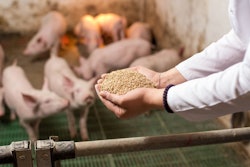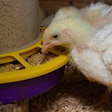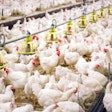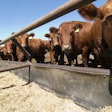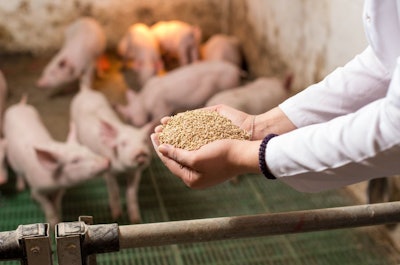
Finishing pigs see fewer effects of undermixing in studies
One of the ways considered to reduce energy costs at feed mills is to reduce mixing time of complete feeds. So, a mandatory question is how long do we need to mix feed to achieve desirable feed uniformity? Here’s an excerpt from a book I published in 2006, that surprisingly offered me the insight I needed in a recent conversation on this topic.
Mixing uniformity, as estimated by coefficient of variation (CV) of a specific nutrient or ingredient (usually chlorine from salt), is used to measure degree of dispersion of ingredients throughout a batch of feed. It is often recommended that a CV less than 10% indicates appropriate mixing, but recent data suggest that up to 20% CV may be adequate for most practical diets.
In general, mixing uniformity increases with mixing time. Appropriate mixing time depends on mixer type and ingredient selection. Vertical mixers require considerably more time than horizontal mixers to achieve similar results. It is suggested that mixing times be at least 15 minutes for a vertical mixer, 7 minutes for a horizontal paddle mixer and 4 minutes for a horizontal ribbon mixer.
Also, a batch of feed composed of ingredients with uniform particles require less time to mix than a batch of ingredients with greater variation in particle size. Best results are achieved when the mixer is loaded first with a portion of the major ingredients, then with minor ingredients and additives, and finally with the remaining portion of major ingredients. Liquids should be always added only after thoroughly mixing all dry ingredients.
The effects of feed undermixing on weaned pig performance have been investigated with a complex starter diet mixed for 0, 0.5, 2 and 4 minutes in a horizontal ribbon mixer.
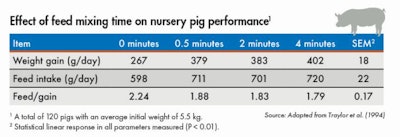
As expected, pigs offered unmixed diets (ingredients were loaded in the mixer and, without mixing, were discharged in bags) had decreased growth performance compared with pigs offered mixed diets. Yet performance was not greatly improved when diets were mixed for more than 0.5 minutes, although best performance was achieved with 4 minutes of mixing time. In this study, coefficient of variability decreased from 107% to 12% as mixing time increased from 0 to 4 minutes, respectively.
Because no effects of undermixing were detected in finishing pigs, it is suggested that mixing uniformity is of greater importance in young pigs, which take rather smaller meals especially during the first few weeks post-weaning.



